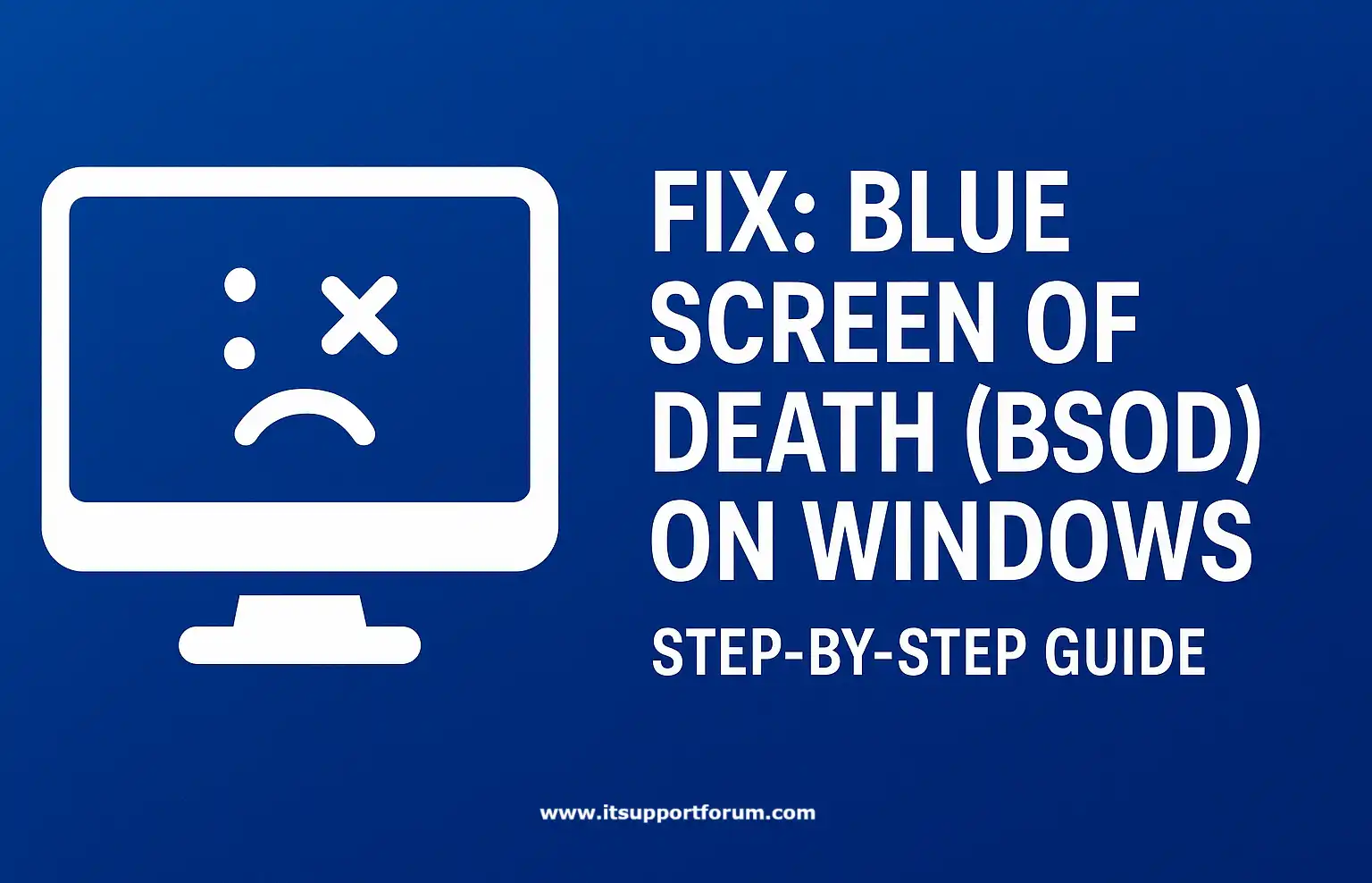Fix: Blue Screen of Death (BSOD) on Windows: Step-by-Step Guide.

The Blue Screen of Death, often referred to as BSOD, is a critical error screen displayed by the Windows operating system when it encounters a fatal system fault.
This screen signals that the operating environment has halted to prevent further data corruption or system instability.
It appears abruptly, often with a hexadecimal stop code such as 0x0000007E or a message like “IRQL_NOT_LESS_OR_EQUAL”.
These errors stem from low-level conflicts between hardware, drivers, and the kernel. When the system fails to recover, it forces a halt, generates a memory dump, and reboots.
The blue screen itself contains diagnostic information, but interpreting it requires technical awareness.
BSOD events may occur once or repeatedly, depending on the underlying issue.
The stop code is only part of the picture; understanding how to trace it back to faulty RAM, driver misconfigurations, or corrupted system files takes deliberate investigation.
If you’ve seen the blue screen flash and vanish before you could read it, don’t worry. Windows logs every crash for analysis. This article explains what triggers BSODs, how to decode them, and how to resolve the root problem without guesswork.
What Causes BSOD Errors in Windows?
Outdated or conflicting device drivers
When drivers for components like graphics cards or network adapters fail to synchronise with the OS, they may cause memory access violations or kernel crashes.Corrupt system files or registry inconsistencies
Damaged Windows system files can disrupt essential processes, leading to failure in services like ntoskrnl.exe or winload.exe.Faulty RAM modules or mismatched memory speeds
Memory corruption often causes intermittent stop codes. Windows Memory Diagnostic or MemTest86 can reveal address-level faults.Failing storage drives (HDD or SSD)
A bad sector or failing controller can cause read-write errors that trigger system halts during boot or active operations.Recent Windows updates or driver patches
A recently installed patch might conflict with existing drivers or introduce instability in how system calls are handled.Incompatible third-party software or antivirus tools
Low-level software with kernel access, like antivirus engines or VPN drivers, can interfere with process execution at the system level.Overheating or power delivery issues
Thermal shutdowns or voltage instability from a damaged PSU may cause hardware-level panic triggers.Malware or rootkit-level system tampering
Malicious software that alters kernel files or memory addresses can cause immediate crashes on execution or during startup.
You might encounter one or several of these issues layered together. Identifying the source begins with analysing the stop code and matching it to one of these categories.
Step-by-Step Fix: How to Resolve BSOD Errors
Each of these steps targets a different source of system instability. Start from the top, and if something doesn’t apply to your setup, move to the next method.
1. Run the Windows Memory Diagnostic Tool
Type “Windows Memory Diagnostic” into the Start menu and select Restart now and check for problems. The system will reboot and test your RAM modules.
If it detects errors, note the exact message. Memory faults can cause kernel crashes by introducing invalid data into protected memory regions. Replace faulty RAM as required.
2. Update or Roll Back Recently Changed Device Drivers
Open Device Manager, right-click on suspect hardware (such as graphics, network, or audio), and choose Update Driver. If problems began after an update, use Roll Back Driver instead.
Driver conflicts often trigger stop codes like DRIVER_IRQL_NOT_LESS_OR_EQUAL or VIDEO_TDR_FAILURE.
The latest isn’t always better; compatibility matters.
3. Uninstall Problematic Windows Updates
Navigate to Settings > Windows Update > Update History > Uninstall Updates. Remove patches installed around the time BSOD errors started.
Some updates introduce unstable drivers or modify kernel libraries. Removing them can restore system stability, especially on older hardware builds.
4. Scan and Repair System Files Using SFC and DISM
Open Command Prompt (Admin) and run:
sfc /scannow
Then follow with:
DISM /Online /Cleanup-Image /RestoreHealth
These tools validate and repair critical system files. Corrupted DLLs or registry mismatches can cause unhandled exceptions that trigger a BSOD.
5. Perform a Clean Boot to Rule Out Conflicting Software
Open System Configuration (msconfig), go to the Services tab, check Hide Microsoft services, then disable all remaining entries. Restart your system.
This isolates third-party applications and services that may inject unstable drivers or interfere with Windows processes at boot time.
6. Check Hardware Health Using Built-In Diagnostics
Use your motherboard or laptop brand’s built-in diagnostic suite. Dell, HP, and Lenovo provide firmware-level tools to check storage, memory, and motherboard controllers.
Besides basic faults, some BSODs originate from intermittent hardware signals. These tools capture errors not visible during routine usage.
7. Use a System Restore Point or Recovery Tool
Open System Properties > System Protection, then launch System Restore. Choose a restore point dated before the first BSOD occurred.
System Restore reverts driver states and registry configurations without deleting personal files. It’s effective when the trigger isn’t tied to failing hardware.
How to Prevent Future Blue Screen Errors
· Keep drivers up to date using manufacturer tools.
· Install Windows updates selectively and review patch notes.
· Use verified antivirus software with low-level kernel access control.
· Maintain stable power delivery and thermal control.
· Schedule hardware diagnostics at regular intervals.
· Avoid sudden shutdowns or forced restarts.
· Use system restore points before significant changes.
· Audit installed software for low-level driver injection.
Conclusion
Blue screen errors present as sudden failures, but they follow a system of rules.
Each one records a condition the kernel could not resolve: an invalid address, a blocked call, a timing fault. The system halts to protect itself, then writes what it can to disk. Interpretation depends on recognising the signal, tracing the component, and narrowing the pattern.
If you’ve followed the process, you’ve interacted directly with the logic Windows relies on to manage risk.
That’s rarely visible from the surface. Knowing what to look for, especially once, makes all future incidents easier to decode.
Read also: How to Clean Up a Slow PC on Windows 11: Full Guide
